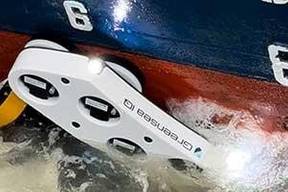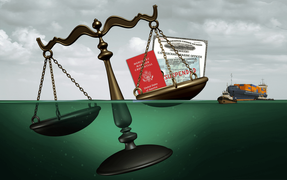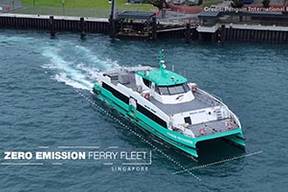Man Overboard Prevention and Recovery

More than 80 maritime professionals attended two one-day events focused on the sub IMO / sub 80-ft. sector in Southampton, U.K. this Spring. The Man Overboard Prevention & Recovery Workshop brought together an international group of experts armed with the latest knowledge to identify problems that affect the maritime sector worldwide. Workshop lead John Haynes opened the day saying said, “Expectations, requirements and capabilities are changing for many maritime organizations. High profile roles are evolving close to shore and offshore in U.K., European and international waters.
Unmanned Surface Vessels: From Concept to Service
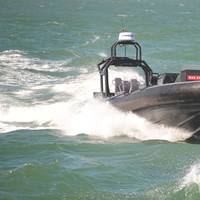
Over the next decade the maritime sector is likely to see one of the largest changes since sail gave way to steam. Unmanned Surface Vehicles (USV) are now being considered for various marine roles and the drivers for rapid development are significant. Unmanned or autonomous vessels have passed through the trial and evaluation stage and are now being adopted for civilian and military applications. The maritime sector now has the opportunity to shape technology developments from legislative and end-user standpoints.
Hybrid Technology for Military and Commercial Vessels
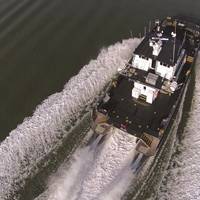
The marine industry is now recognizing the potential of utilizing hybrid power and innovative propulsion systems. Certain maritime sectors are potentially well suited to hybrid systems. These include ferries, pilot boats and workboats that have relatively consistent duty cycles. For military applications, hybrid systems are relevant for patrol, intercept and autonomous vessel duties. Submarines have utilized batteries and stored energy for many years. Diesel/electric systems have long been in use, but these are not hybrid systems.
Workboat Communications Evolve to Meet Myriad Missions
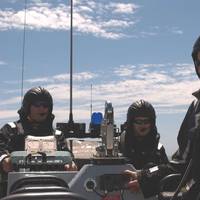
Choosing next generation communication systems for professional marine operations can be a daunting task. Not to worry: John Haynes provides a primer. Over the past decade we have come to expect fast, seamless global communications from a single device that fits in our pocket. The age of the smart phone and tablet enables multiple voices talking in a conference call and real time transfer of data, ranging from documents to photos and videos. In the modern bridge, most crew members have a GPS in their pocket which can identify where that person is on the planet.
Riders on the Storm
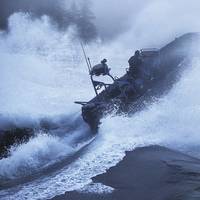
It’s no shock that decking, seating and other related equipment for ‘fast boats’ is a critical ingredient for maritime security personnel. A shock mitigation strategy is essential for all craft that undertake open sea transits or operate in rough water. The definition of shock mitigation is, ‘to make a violent collision or impact less intense.’ The search for shock mitigation has created a range of solutions. Before that, however, criminal organizations capable of buying fast boats were most likely running something, or someone, illegal in from offshore.
The Hour of Power
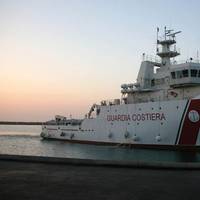
In 2015 two significant developments are going to make many operators, owners and builders of professional vessels consider hybrid marine power. First, the new emissions laws in ports and second, there is now an incentive for high technology manufacturers to invest in developing highly efficient batteries. Hybrid is ‘here and now’ technology that is being utilized by many industries around the world. The marine industry is now recognizng the potential of utilizing hybrid power and innovative propulsion systems for vessels in the sub IMO / sub 24 meter (80 feet) professional sector.
The 'Hour of Power': Hybrid Marine Technology & Green Ports
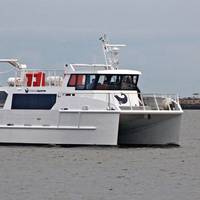
In 2015 two significant developments are going to make many operators, owners and builders of professional vessels consider hybrid marine power. Firstly the new emissions laws in ports and secondly there is now an incentive for high technology manufacturers to invest in developing highly efficient batteries. Hybrid is ‘here and now’ technology that is being used by many industries globally. The marine industry is now recognizing the potential of utilizing hybrid power and innovative propulsion systems for vessels in the sub IMO / sub 24 meter professional sector.
The Hour of Power: Hybrid Marine Technology and Green Ports

In 2015 two significant developments are going to make many operators, owners and builders of professional vessels consider hybrid marine power. Firstly the new emissions laws in ports, and secondly there is now an incentive for high technology manufacturers to invest in developing highly efficient batteries. Hybrid is ‘here and now’ technology that is being utilized by many industries around the world. The marine industry is now recognizing the potential of utilizing hybrid power and innovative propulsion systems for vessels in the sub IMO / sub 24 meter professional sector.
Design & Operation: Wind Farm Support Vessels
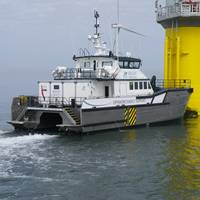
Offshore wind farm development has been led globally by the UK, followed by Germany. Both countries have governments with long term commitments to renewable energy. Denmark, Belgium and The Netherlands are building wind farms, but they are a long way behind the leaders in offshore wind. In 2014 the UK accounted for over 50% of all the offshore wind energy generated globally. All of these countries border the North Sea, a notoriously stormy sea area, which has a high frequency of wind to drive the turbines. Traditional survey vessels are first to arrive in a potential wind farm area.
Next Generation Shock Mitigation for Fast Boats
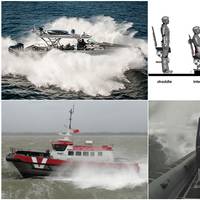
Workboat construction now demands that naval architects factor in the physical demands on passengers and crew. As wind farm requirements increase, so too will the need for greater protections. A major challenge for the builders of next generation RHIBs and high speed craft is delivering platforms that balance high performance with the physical demands on crew and passengers. With the arrival of ‘unbreakable boats’ plus a surplus of engine power, ‘man’ is often considered as the weakest link.
Extreme Applications Demand Specialist Small Craft

In a dangerous world, even the largest ship in the world depends on the smallest maritime security and special mission platform. And when it comes to small boat security operations, innovation is the name of the game. With 90% of world trade transported by sea then passing through ports and waterways, no amount of technology will replace the requirement for multiple small fast craft and skilled operators. Finding new ways to share knowledge and best practice has never been more important in the maritime world.
Solar Boats Gather for Race in Monte Carlo
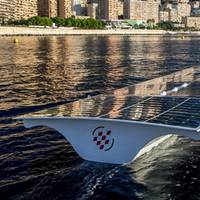
Shock Mitigation and the RIB & HSC Directory are official sponsors and media partners with the Solar1 event in Monte Carlo. Solar powered boats from all over the world are set to battle it out over two days in the first truly green solar powered boat world championship. From July 10-12, 2014 the historic Yacht Club de Monaco is hosting the Solar1 event, competing for the Monte Carlo Cup. Developed by universities all over the world and driven by young students, this race is destined to be a significant future facing sport.
With an Interceptor, a RHIB and a Cat
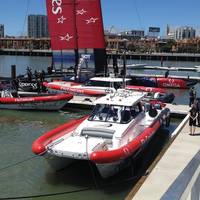
Two extreme AC72 foiling catamarans with wing sails went head-to-head at over 40 knots in San Francisco Bay, California. The teams were competing in the 2013 Americas Cup Challenge which took place from September 7-21, 2013. Anyone watching the first few days of Americas Cup sailing will know that it looked like Emirates Team New Zealand had a seemingly untouchable lead – then out of the blue Oracle Team USA completed one of the greatest comebacks in sport to win the 34th America’s Cup.
FRC International Launch Dynamic Navigation for High Speed Craft

FRC International is launching the innovative DYNAV (DYnamic NAVigation) system for high speed craft at Chalmers University of Technology in Gothenburg, Sweden, October 29-30. All individuals and organizations operating planing craft from SAR, navy, special forces, coast guard, law enforcement, renewables and the commercial sector are invited to attend the DYNAV launch event. This will be an excellent opportunity for international RIB & HSC professionals, boat builders, equipment manufacturers and industry to come together with the objective of improving sefarer safety on fast craft.
Crew System Integration on RHIBs and High Speed Craft
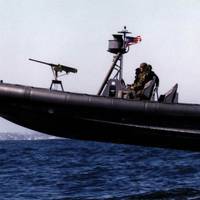
Human Systems Integration (HSI) is a recognized requirement for many organizations. This is rapidly becoming more important as the professional RHIB and high speed craft sector are required to perform increasingly complex tasks. The objective is for marine units to deal with new scenarios, make fast decisions and implement them using high speed craft and specialist equipment to achieve successful outcomes. Crew-Systems Integration (CSI) brings together all these elements for the fast boat sector.
FRC International Launch WBV Courses in Canada
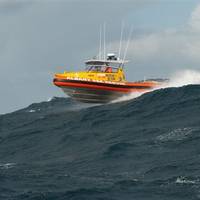
FRC International is running the first program of ‘Back To Back’ Whole Boat Vibration (WBV) courses in Canada this April. The lead for these courses is Canadian Coast Guard and Canadian Navy. These courses are part of improving sea safety and are open to all interested parties. The object is to include all organizations operating RHIBs and planing craft. Both venues also enable boat builders, equipment manufacturers and industry to attend. The first two days of ‘Back To Back’ courses are in Ottawa at the Convention Center.
The Weakest Link
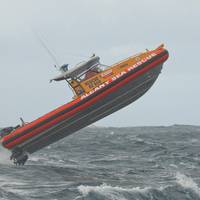
The world is changing fast and this is especially true in the fast boat sector. Since the millennium, rigid hull inflatable boats (RHIBs) and high speed craft (HSC) have been at the cutting edge of maritime operations for everything from homeland security and law enforcement to extreme weather rescue. For over 30 years specialist organizations around the world including the RNLI (UK lifeboat), Royal Marines, US Navy and US Coast Guard have driven the evolution of fast craft. They know what has worked in the past and know what boats they want for the future.
Vibration Mitigation on Fast Craft
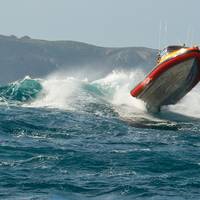
The professional maritime sector recognizes the need to reduce the effects of Whole Body Vibration (WBV) but this is not a straightforward process for those operating planing craft. These vessels can expose crews and passengers to high levels of repeated shock and vibration which has been shown to increase the risk of injury. In flat sea conditions there is vibration from the engine, gearbox and shaft but the crew and passengers are not exposed to harmful vibration. All fast boat operators know that waves change everything.
M.C.A. Approves Name Changes for Certifications
For many years the M.C.A. approved Professional Yachtmaster Certification with STCW basic safety training is¬sued by IYT has been confused with the recreational Yachtmaster certification issued by the Royal Yachting Association (RYA) in the U.K. As a result, the M.C.A. approved IYT to change the name of its “Professional Yachtmaster Certificates” on June 26. Changes include: the IYT Yachtmaster Coastal, will be known as “Master of Yachts 200 Tons” (Coastal); the IYT Yachtmaster Offshore will be known as “Master of Yachts 200 Tons” (Offshore); and the IYT Yachtmaster Ocean will be known as “Master of Yachts 200 Tons” (Ocean). The Master of Yachts courses will continue to require STCW Basic Training. There will be no changes with regard to sea time, standards or content.


